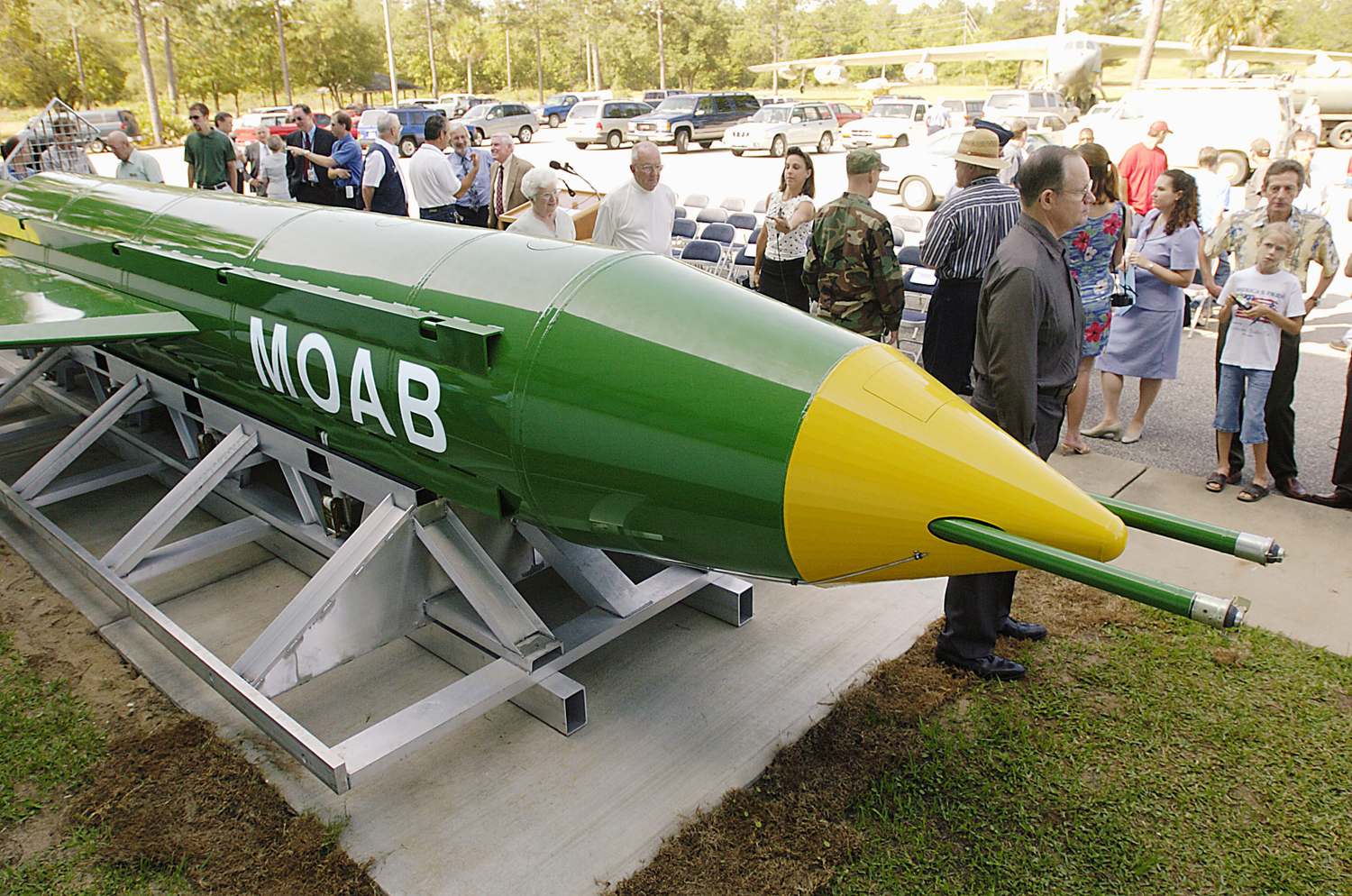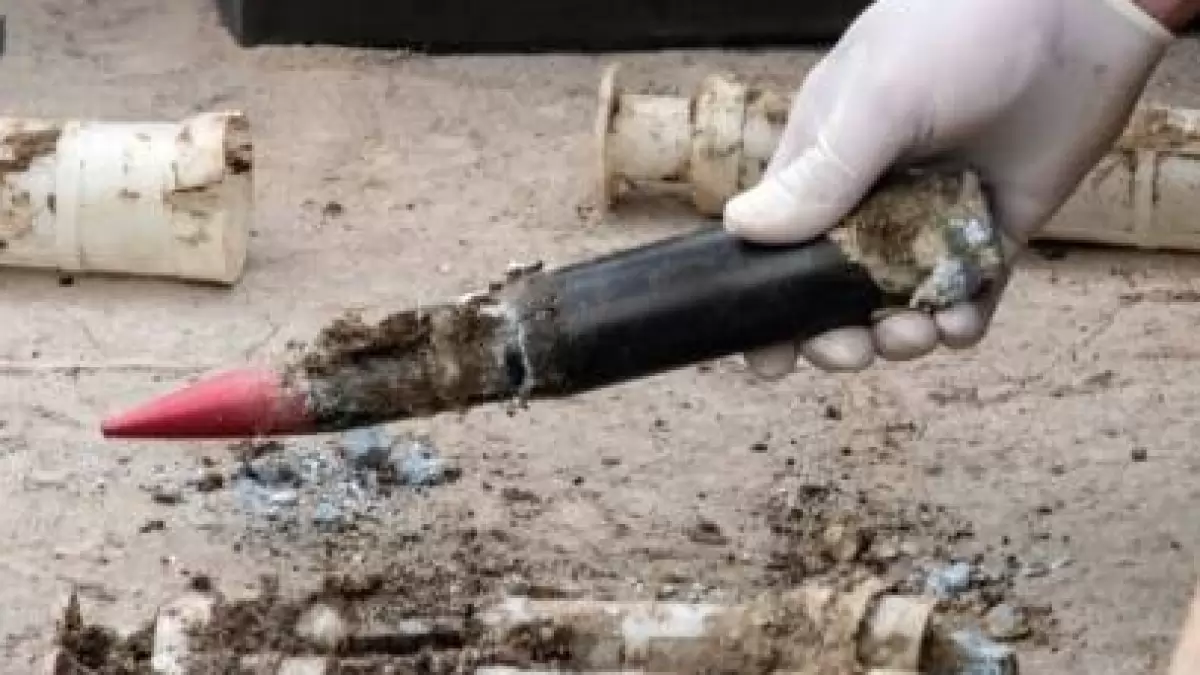ILL WINDS

ILL WINDS
by William Thomas
willthomasonline.net exclusive
Soon after the U.S. assault on Afghanistan commenced, Secretary of Defence Donald Rumsfeld told the press that “he did not rule out the eventual use of nuclear weapons." [Houston Chronicle Oct 20/01]
The reason nuclear weapons must be used, Americans were told, is that only a nuclear blast can vaporize caches of chemical, nuclear or biological weapons not authorized by Washington, which retains biological weapons, and 5,045 nuclear warheads in its own stockpiles. [AP June 11/07]
As I was told by a Desert Storm veteran and 15-year military source I call “Hank”, pursuing al-Qaeda and Taliban fighters across Afghanistan’s “wide flat open spaces” is not too tough. But “hills that crop out of nowhere… are craggy and rocky with holes in them that we can’t detect. We know they had access to the Russian biologicals. They could have it in the cave. The container could be open…”
For this reason, “in caves 75 to 89 percent of the time, our guys are wearing an NBC suit as a precaution. You never know what these guys might have in there — Taliban and Al Qaeda. We knew categorically that they had captured a lot of Soviet munitions, so we knew that whatever these guys fielded they captured. Last ditch stuff.”
But trying to explode chemical-biological munitions is a spectacularly bad idea—as coalition forces downwind of Iraqi CBW stockpiles learned to their cost during the first Persian Gulf War. As Benjamin Phelan points out in Harper’s, “A well-designed granite bunker could with-stand four times the shock produced by” a conventional bunker buster.
“If the bunker housed weapons of mass destruction,” he went on, “studies have shown that a canister of, say, mustard gas could be insulated from the heat of the blast by a few meters of earth, and thereby escape being vaporized. Cushioning the canister from the shock wave is more difficult, and in the likely event that a canister is ruptured but not destroyed, the chemical agent would escape the shattered container into the earth; a split second later it would be blasted up into the air, carried away in the fallout cloud.” [Harper's Dec 1/04]
Another risk, Hank cautioned, “If you nuke something that’s already [in a fissile pile], you’ll get a cook off you didn’t expect.” Even doing “a flash bang” over an area scattered with transported yellow cake, or Depleted Uranium debris, “could cause those pieces to reciprocate” by absorbing and then reflecting incoming Alpha, Beta, Delta, Gamma and X-rays.
The risks are compounded when countries faced with an American willingness to use nuclear weapons forces them to respond with 4th generation “low yield” nuclear weapons of their own. "The concern is that countries are starting to see these weapons as useable, whereas during the Cold War they were seen as a deterrent," said Ian Anthony, a nuclear expert at the Stockholm International Peace Research Institute. [AP June 11/07]
Because "low-yield nuclear weapons blur the distinction between nuclear and conventional war,” a 1994 law forbid research and development on nuclear weapons of less than 5 kilotons. But the 2001 Defense Authorization Bill passed by Bush’s Republican Congress overturned these earlier restrictions in time to conduct “field tests” in Afghanistan — exactly as “Little Boy” and “Fat Man” had been tested on the starving citizenry of Hiroshima and Nagasaki.

POINT TOWARD ENEMY
Categorized as a "deep earth penetrating bomb" capable, according to atomic scientists, of "destroying the deepest and most hardened of underground bunkers, which the conventional warheads are not capable of doing"—with “dialable” nuclear warheads between 0.3 to 340 kilotons (equivalent of 300 to 340,000 tons of very “hot” TNT)—the 150 B61-11s in the U.S. arsenal are the nuclear version of the GBU-28. [Bulletin of the Atomic Scientists May/June 1997; Wired Oct 8/01]
As Hank described it, “When a bunker buster burrows in, the blast is directed downward. You’re getting a slice of the pie rather than the whole pie that will slice into what you’re aiming at and crack it open. It’s a lens and it’s focused straight down instead of outward.”
Designed to penetrate deep into the earth before detonating, a shaped “lens” in the warhead directs nuclear blast hotter than a thousand suns downward, destroying everything buried beneath it in a "shock-coupling effect” to a depth reaching several hundred meters.” [Defense News Mar 2/97]
Senior staff scientists Lisbeth Gronlund, David Wright, and Robert Nelson at Union of Concerned Scientists further explain: “By exploding just a few meters underground instead of at or above the surface, a much larger fraction of the energy of the explosion is transmitted to the ground. The explosion creates a strong seismic shock wave that propagates and can crush or damage an underground bunker. Even a short penetration distance accomplishes this goal of "coupling" the energy of the explosion to the ground: penetration of a few meters increases the underground destructive effects by more than a factor of twenty.” [www.ucsusa.org May/05]
Hank summarizes the effects of dropping a nuclear bunker buster with typical GI directness, “Do an overpressure wave in a cave, everything in there is squished.”
With the resulting hard radiation supposedly sequestered underground, the 1,200-pound B61 was enthusiastically hailed by Bush administration backers as a “relatively safe” atomic bomb that would not kill too many innocent bystanders. Or freak out the world. [Philadelphia Inquirer Oct 16/00]
PINGING
Another use of tactical nuclear weapons is to locate buried bunkers by “echo-ranging”. While Ground Penetrating Radar can see through only about 15 feet of sand, oil prospectors hoping to detect underground deposits at depths greater than 300-feet bounce shockwaves from explosions to reveal underground objects and cavities. Recorded by sensors fitted with precise Global Positioning satellite transmitters, reverberating echoes can be used by computers by create precise, three-dimensional mapping of deeply buried features —“ similar to the approach used by a submarine when it emits a sound (or "ping") and listens for an echo,” according to the U.S. Air Force. [USAF Air War College May 2000]
Except in this case, the “ping” is a nuclear detonation.
“You get a 3-D map of the area,” Hank confirmed. After a nuclear blast “rings the mountains like a bell, you know where the holes are where the people are. Our guys went in there in NBC suits.”
FALLOUT
But the air force was worried. Three months before 9/11, its study concluded: “The political repercussions of employing nuclear weapon may be greater than the United States would want to contemplate, and the environmental consequences of potentially spreading a warehouse full of potentially deadly biological or chemical agents would be unacceptable.” [USAF Air War College May 2000]
The political fallout from the first use of nuclear weapons against another country since Nagasaki could be as bad as the “large area of lethal fallout" scientists warned would follow " the large amount of radioactive dirt thrown out in the explosion” from a 5-kiloton weapon. [Philadelphia Inquirer Oct 16/00]
As Canada’s Global Research institute reports, medical doctors in Yugoslavia — where tons of DU munitions were fired by NATO warplanes and cruise missiles — were already reporting “multiple unrelated cancers” in families living in highly contaminated areas with no previous history of cancer. A previously unknown phenomenon, these “very rare and unusual cancers and birth defects have also been reported to be increasing, not only in war torn countries, but also in neighbouring countries from transboundary contamination.” [Global Research July 8/04; American Free Press Aug 27/04]
What would happen if “Non-Depleted” radioactive uranium fallout dusted a populated region?
Based on three extensive field investigations, UNEP calculates that 30,000 radioactive uranium projectiles were fired in Kosovo — releasing thousands of tons of easily respirable or ingested uranium oxide dust particles, mostly under 1.5 microns in size. The diameter of a human hair is 100 microns. [European Parliament Verbatim Report of Proceedings Apr 9/02; Bundesforschungsanstalt für Landwirtschaft (FAL) Nov 8/05]

Just as in Afghanistan, and later in Iraq, the tonnage of radioactive Uranium-238 and toxic nickel and other heavy metals detonated in the warheads of hundreds of cruise missiles fired at those countries has never been tabulated. Former Naval officer Daniel Fahey has conducted extensive research on depleted uranium. "You're talking about something that should be stored as a radioactive waste, and [instead they're] spreading it around other countries. [Mother Jones June 23/99]
The effects of DU radiation from concentrated bombardments would certainly mask the health symptoms incurred downwind of a low-yield nuclear detonation. As reporter Robert Fisk wrote from the town of Hadjici, “Up to 300 out of 5,000 Serb refugees whose suburb of Sarajevo was heavily bombed by NATO jets in the late summer of 1995 have died of cancer. ...All the surviving refugees of Hadjici ... believe that the cancers and leukemia that have affected this population were caused because the U.S. A-10 bombers that struck their factories were firing depleted-uranium weapons.” [Independent Jan. 13/01]
Just as veterans of Desert Storm came to call their mysterious maladies “Gulf War Syndrome,” soldiers posted to Bosnia and Kosovo in the 1990s began referring to the “Balkans Syndrome.” By January 2001, more than a quarter of the 1,400-plus Greek troops stationed in Kosovo had pushed to leave because of the increased risk of cancer.
US law, and US Army Regulations AR 700-48 and TB 9-1300-278 require the army to "Clean and Treat" all persons affected and all areas contaminated by the radioactive uranium munitions. But Lt. Col. Mike Milord confirms that the Pentagon has zero plans to clean up radioactive contamination in Kosovo—or anywhere else. [Vanity Fair Nov/04; Daily Telegraph Jan 15/01] If the Depleted Uranium explanation somehow failed in the DU-saturated region around Tora Bora region, Hank told me, “we could blame radiation on the terrorists.”
Photo Captions
Made In USA Mother Of All Bombs coming to a neighborhood near you -politifact.com
USA! USA! USA! American B-52s against world's poorest population in Afghanistan -pinterest.com
Rapid-fire Depleted Uranium radioactive aircraft cannon shells have poisoned Aghanistan, Iraq, Serbia, Kuwait and Ukraine -outlookindia.com